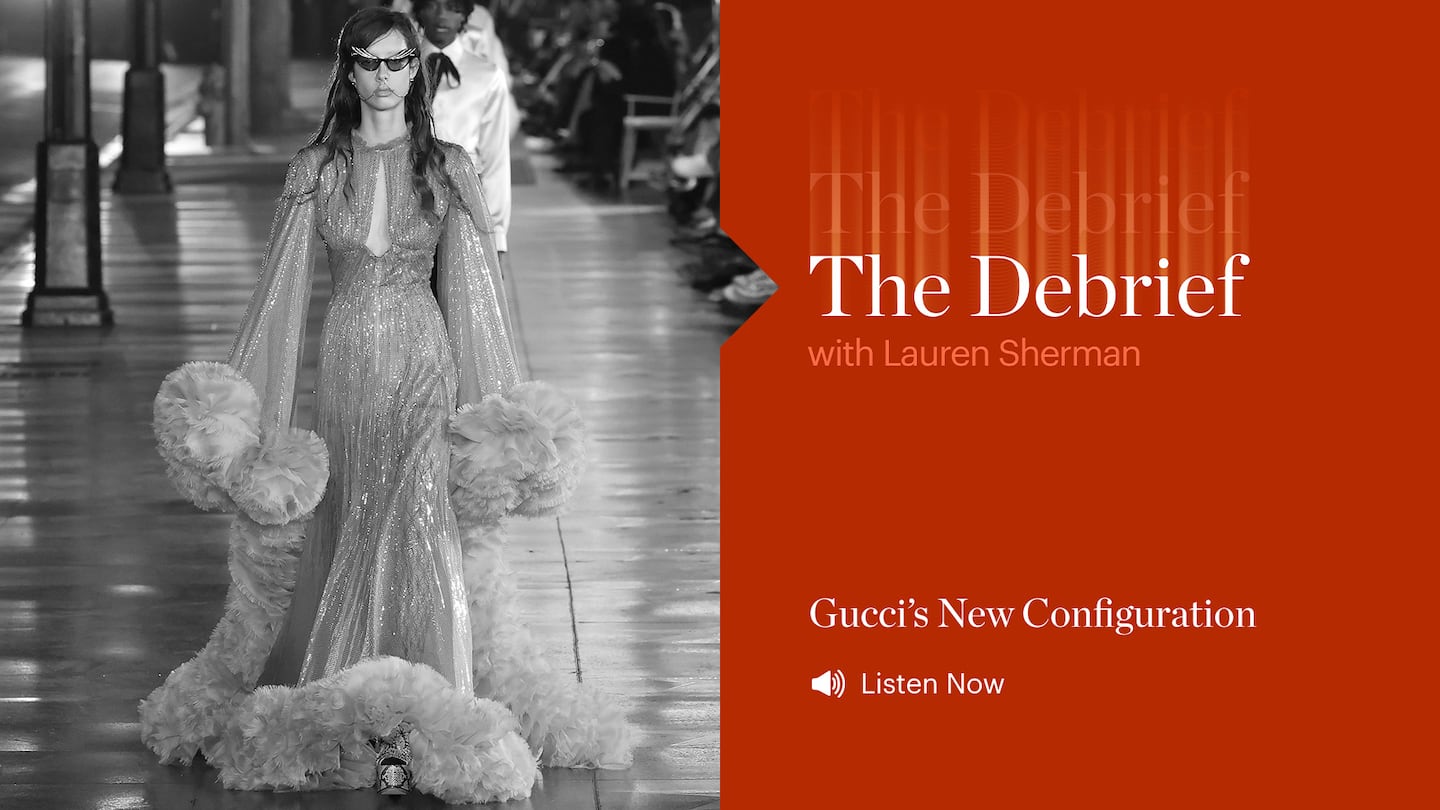
The Business of Fashion
Agenda-setting intelligence, analysis and advice for the global fashion community.

Agenda-setting intelligence, analysis and advice for the global fashion community.

Follow The Debrief wherever you listen to podcasts.
In the late 2010s, Gucci pulled off a successful turnaround by aligning creative director Alessandro Michele’s unique, baroque aesthetic and Jacopo Venturini’s expert merchandising under the leadership of chief executive Marco Bizzarri, according to Luca Solca, Bernstein luxury analyst and BoF contributor. They injected the brand’s heritage and tradition with streetwear codes and coolness — bringing more casual products like sneakers into the luxury fold, and sparking the era of “new luxury,” said Solca.
Lately, the brand has started to see momentum slow, falling behind rivals on organic growth. In search of a boost, Gucci has reorganised, introducing two newly created roles to support creative director Alessandro Michele.
“The onus is on Gucci to continue to drive newness so that consumers can turn their heads and say, ‘Wow, this is something I don’t have. I want to buy it,’” said Solca.
The fashion giant has been working with advisers to study possibilities for the Marc Jacobs brand after being approached by suitors.
A runway show at corporate headquarters underscored how the brand’s nearly decade-long quest to elevate its image — and prices — is finally paying off.
Mining company Anglo American is considering offloading its storied diamond unit. It won’t be an easy sell.
The deal is expected to help tip the company into profit for the first time and has got some speculating whether Beckham may one day eclipse her husband in money-making potential.